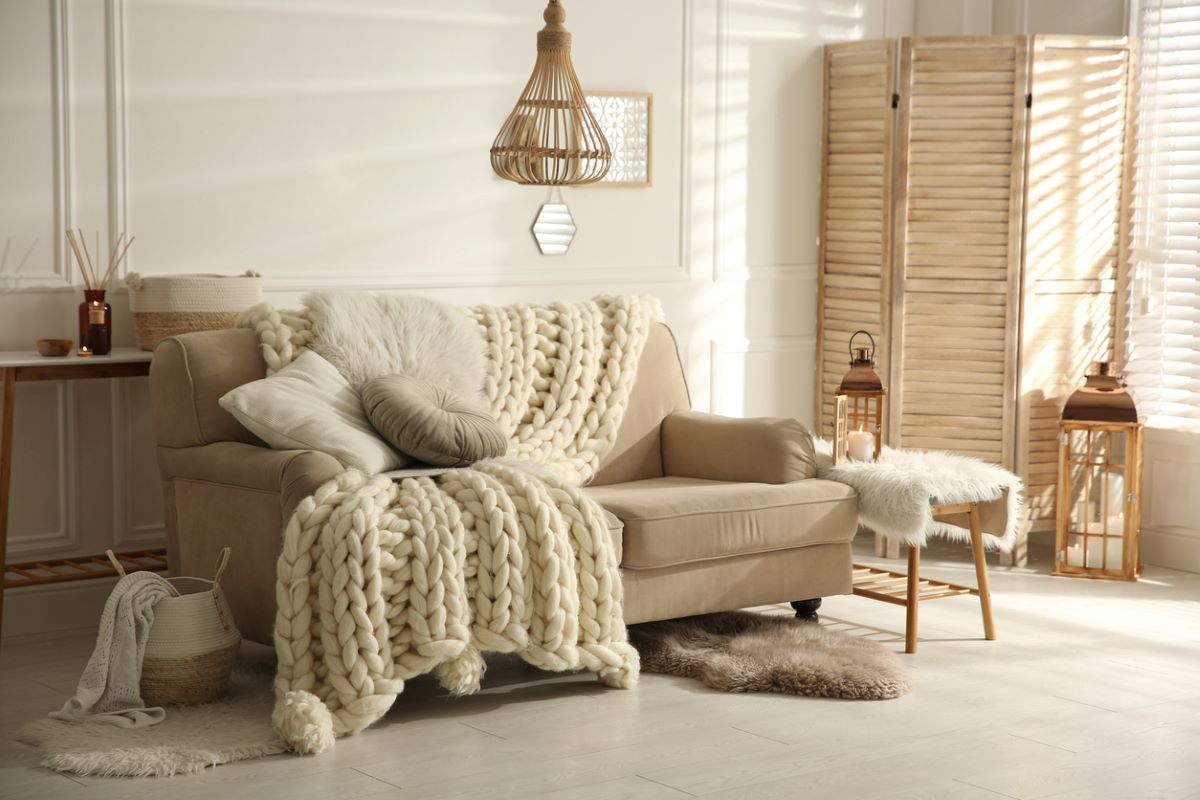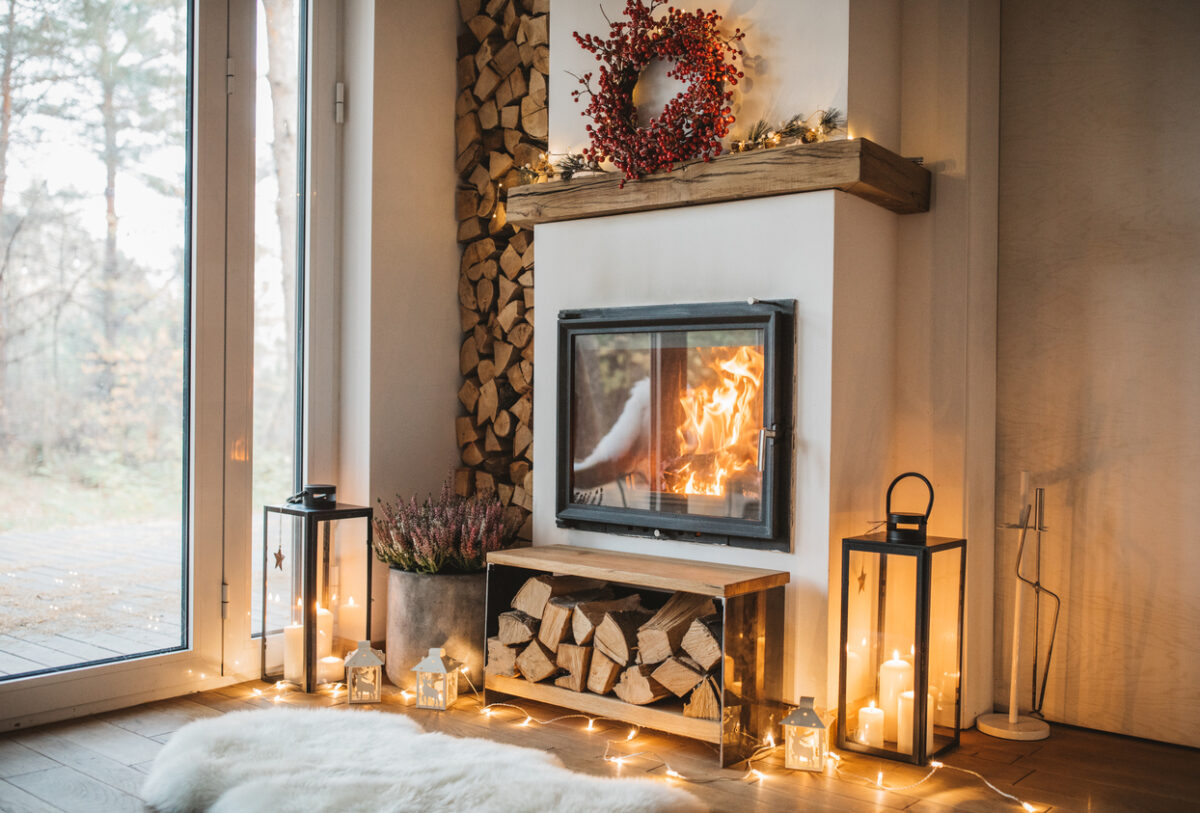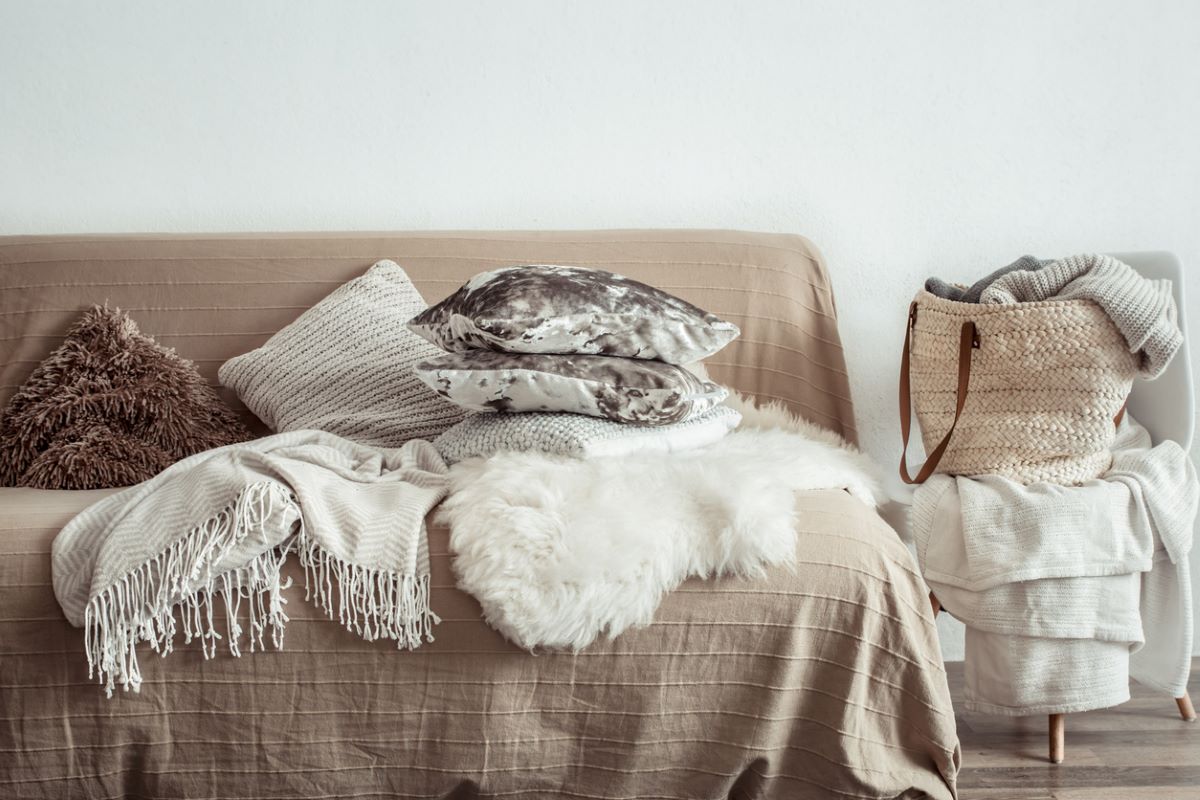

We may earn revenue from the products available on this page and participate in affiliate programs. Learn More ›
If you’re not familiar with the concept of hygge and hygge design, it may seem a bit difficult to understand. In reality, however, hygge—which is pronounced “hoo-gah”—refers not just to a home design trend, but to a lifestyle.
So, what is hygge? Read on to learn more about this Danish concept and how to transform your home into a cozy, comfortable, and welcoming space.
RELATED: What is Boho Style? 6 Things All DIY Designers Should Know
What does hygge mean?
Hygge is an integral part of Scandinavian design and lifestyle. The term refers to having the ability to be present and take joy in each moment. Those who truly embrace hygge are able to feel the meaning of the word, rather than simply viewing it as a trend or fad.
That feeling of hygge can be translated and applied to one’s home and decor. In fact, the concept of hygge was originally shaped by Danes spending prolonged time together indoors during the country’s long cold months.

1. Choose furniture and decor with natural elements.
So, what is hygge decor? Unlike many popular interior design styles, hygge decor doesn’t involve redecorating your home by buying all the latest trends at the store. In fact, quite the opposite is true. Hygge focuses on making your home more cozy and warm by rearranging what you already own and adding small touches.
Using furniture or decor with natural elements can help you achieve this goal. Think neutral-colored, comfortable, and cushioned furniture adorned with your favorite pillows and throw blankets. Natural wood tables and other furniture pieces, along with natural fibers for rugs, curtains, blinds, and other decor elements, can also help create a hygge feeling in your home.
2. Be strategic with your lighting.
The lighting in a room can enhance or take away from the feeling of hygge. Steer clear of overly large and bright light fixtures, and focus instead on being purposeful with the types of lights you add and where you place them. Vintage light fixtures that produce a slight glow can help create the ideal ambiance for a hygge environment.
Other ways you can make your space more hygge include hanging curtains with sewn-in fairy lights, adding lights above treasured family pictures or artwork, or placing small lights on bookshelves or cupboards.
3. Employ a neutral color scheme.
As you plan out your hygge space, look to use more neutral tones, especially for the larger surfaces and furniture pieces in the space. When you use natural and neutral colors for these elements, it brings the space’s other decor into focus. Add some pops of color with throw pillows, family photos, artwork, and other treasured decorative items.
Likewise, hygge style often favors simple, neutral dishware like this classic option available at Amazon. These neutral tones create a blank canvas, letting the food served on them be the true focal point of meals.

4. Light plenty of candles and let in sunlight.
Light candles and let natural sunlight into your home, rather than relying on brighter ceiling lights or table lamps. The warm and soft light of a candle is less harsh than that of an LED or incandescent bulb. Additionally, candles and natural lighting can help create a more welcoming and relaxing environment—key tenets of a hygge lifestyle. Similarly, the natural glow of a burning fireplace is also very hygge.
5. Include vintage elements.
Vintage elements and accessories can also help pull together a hygge home design. One of the important beliefs of those living a true hygge lifestyle is that frivolous and pointless items shouldn’t be incorporated into a home’s decor. Rather, each piece should be purposefully selected due to its characteristics, meaning, and ability to enhance the feel of the space.
Vintage items closely align with this mindset. They add charm to a space while also conveying a deep and interesting past. Some ways you can add some vintage charm to your hygge space include using vintage silver pieces as decor or planters, displaying vintage cooking accessories in your kitchen, repurposing an antique by converting it into a lamp, and displaying vintage signs or tins. You could even consider purchasing a few vintage furniture pieces, such as a sewing table, couch, or dining table.
6. Showcase your favorite books.
Using your collection of books to enhance your space is another popular aspect of hygge home decor. Books—like Meik Wiking’s The Little Book of Hygge: Danish Secrets to Happy Living, which helped popularize the concept of hygge outside of Denmark—are meant for more than simply collecting on a bookshelf or in a corner. They can help start conversations, offer an escape from boredom, and more.
Consider laying out or prominently displaying some of your favorite titles and authors. Leaving a book laying on the end table next to the couch may not only encourage you to pick it up and start reading it, but it also makes the space look well-loved and lived-in.
You can still leave some books on the shelves, too; but be a bit more purposeful about how you arrange them. Consider sorting them by size or color or standing them up in a way that makes them part of the room’s decor. Be sure to leave space on bookshelves for other decor, such as tchotchkes, photos, and vases like this neutral option available at Wayfair.

7. Create a cozy nook.
As previously mentioned, one of the central tenets of hygge is creating the feeling of warmth and coziness. A truly hygge living room will feature a cozy nook where residents or guests can get warm and comfortable while enjoying a good book, chatting with others, or simply unwinding in peace.
This cozy nook can serve as a mini retreat within the home—a place where you can enjoy an escape from the stresses of daily life. It can be centered around a window seat, sofa, or a thoughtfully placed reading chair.
8. Embrace warmth, especially in winter.
One simple answer to the question, “What does hygge mean?” is warmth. Denmark is very cold during the winter months. Part of the appeal of a hygge lifestyle is feeling warm—both inside and out—despite the frigid outdoor temperatures. Add touches of warmth to your space, especially during winter. Throw blankets and cozy seating can help keep your body warm and comfortable.
You can also make your space feel warmer with the decorative accents you select, such as candles, paintings, throw pillows, and more.

9. Incorporate a variety of textures.
Don’t be afraid to mix and match different textures within your space. Play with wood, leather, wool, and other natural materials to see which combinations help enhance the overall coziness of the space. You can also add touches of lace, velvet, flannel, or faux fur until you achieve the look you’re after. Take care not to make things look too cluttered, but different textures can increase the character and uniqueness of your space.
10. Remember that simplicity is key.
Before you start planning the changes you want to make to your space to make it more hygge, remember that hygge focuses on simplicity and authenticity. Try to work primarily with the furniture, materials, and decor items that are already present in your home. Find new ways to use these items to achieve the look you’re after, and evaluate if there are a few new or vintage items that you think will help pull everything together.
